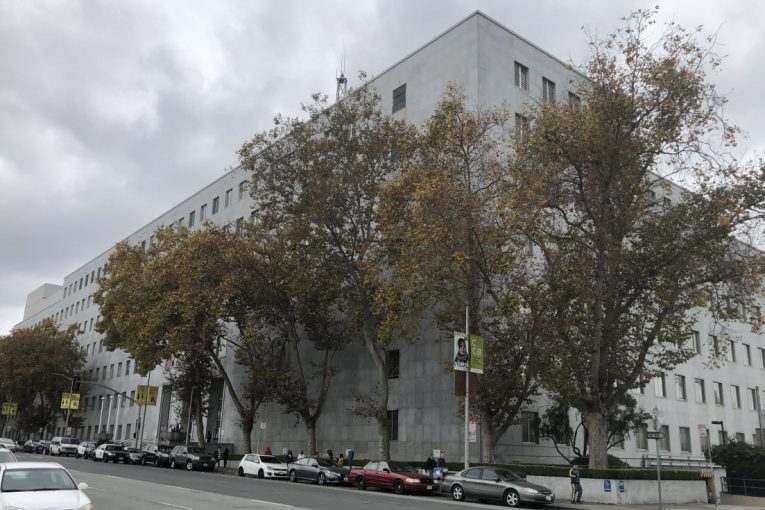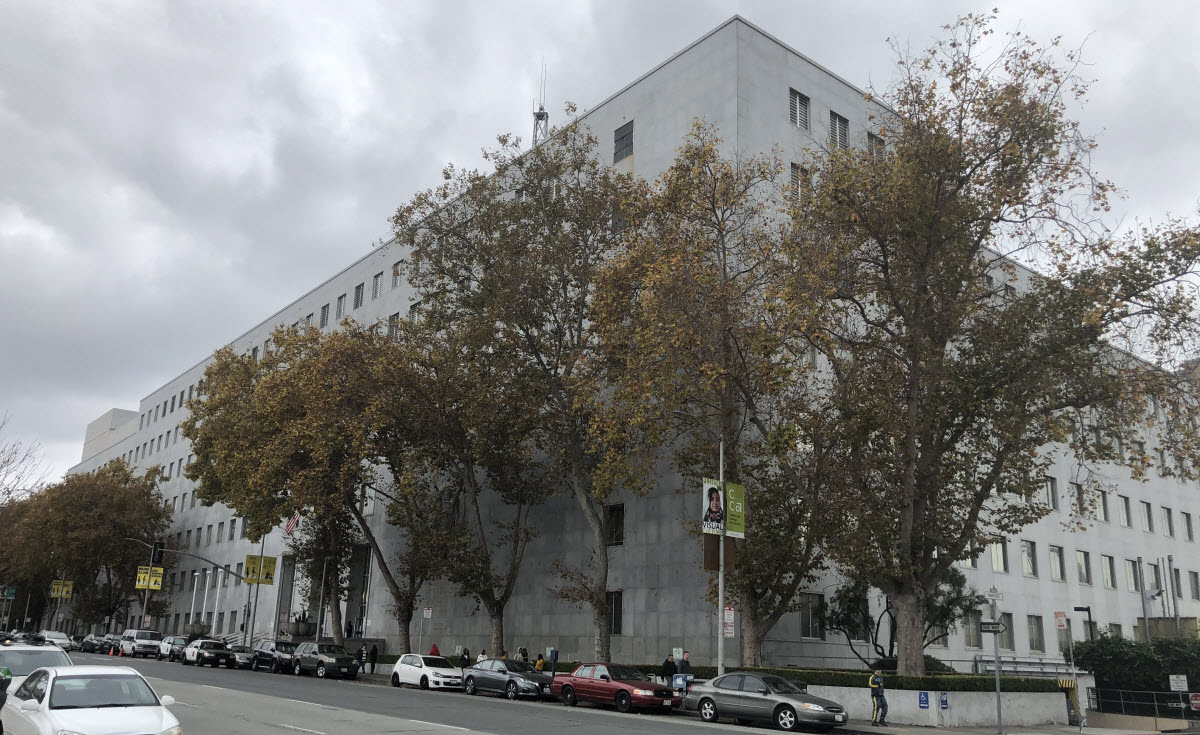

Man Charged With 7 Restraining Order Violations Sees Beginning of Closing Arguments
By Danielle Silva
SAN FRANCISCO – A man is charged with seven restraining order violations after allegedly going near the home and the work of a woman with whom he was previously in a relationship.
Andrew Stewart is charged with four civil restraining order violations and three criminal protective order violations. The first restraining order was filed in July 2019, six months after the alleged victim and the defendant’s relationship ended.
The prosecution began their opening statement by outlining the timeline of events.
The alleged victim allegedly sought and filed a restraining order in July 2019. She received help from a worker there in filling out a temporary stay-away order and asked a mutual friend of the defendant and alleged victim to deliver the papers to Stewart. On August 2, 2019, a criminal protective order preventing the defendant from interacting with or being near the alleged victim was issued.
On Sept. 8, 2020, the defendant had allegedly appeared outside of the alleged victim’s home. A person from that home that was not the alleged victim’s called the police. At the station, the officer found the defendant had not been served the stay-away order.
In a video presented by the prosecution, the officer reads the lines on what the defendant should not do, specifically stating the defendant could not make contact with the defendant and should not be within 150 yards of her, her home and her place of work. Stewart is also not supposed to make contact with her directly or indirectly and is not to annoy, harass, threaten, or commit any acts of violence against her. The order is read to the defendant in what appears to be a public space where the officer reads parts of the order. The defendant attempts to speak during the reading but the  officer interrupts him.
officer interrupts him.
The officer also allegedly placed a physical document with the protective order in the defendant’s possession.
Five days after that incident, the defendant returned to the alleged victim’s home and stood across the street. As she left her home, he allegedly walked up to her and tried to get into her basement. This is the first alleged violation of the civil restraining order charge.
Following this, a criminal protective order was placed on October 10 where a judge explains the defendant should not make contact with the defendant. The next day, the defendant allegedly violates the civil stay away order and the criminal protective order. He allegedly is sitting on the sidewalk with his friends and allegedly greets the defendant as she is passing by. Stewart was allegedly within 150 yards of her home and the alleged victim went up to him and took a picture on her phone. The photo shows him within four feet of the picture taker with two friends on either side of him.
On November 9, the alleged victim was working at a cafe when she noticed the defendant walking by the door, again allegedly violating the civil and criminal restraining orders. Footage from the cafe shows the alleged victim serving a customer and noticing the defendant near the door. The alleged victim tenses up and after a while calls the police. The prosecution states in the footage the defendant is walking back in forth by the glass storefront and is gone before the police arrive.
On November 22, the alleged victim again sees the defendant at her place of work. She calls the police and they arrest him.
The prosecution stated they wanted to address the credibility of the defendant in the rebuttal but noted the defendant admitted to being at the cafe on November 22. They noted the defendant’s actions were a repeated pattern.
Closing Arguments Brings Criminal Restraining Order Case to a Close
By Manuel Espinoza
SAN FRANCISCO – On March 9, 2020, closing arguments and a rebuttal were heard in a case that charged the defendant with seven counts of violating restraining orders.
The closing argument was held in Department 26 of the San Francisco Hall of Justice and was presided over by Judge Edward Torpoco. The defendant, Andrew Stewart, had received both civil and criminal restraining orders to stay 150 yards away from the victim and the place she lives at all times. Stewart had allegedly violated both orders a total of seven times. The deputy public defender held the first opportunity to argue that the defendant be found innocent.
The defense started their argument with the statement, “Andrew Stewart never intentionally violated a court order.” They stated that when determining the outcome of the case, the jury must analyze the facts and prove that Stewart violated the restraining orders beyond a reasonable doubt.
The defense introduced Stewart to the jury by stating that he is a homeless, 51-year-old man, who has been living in the Mission District of San Francisco for three years. Stewart had previously dated the victim in this case and they had not since been together for about a year prior to the violations.
The defense then argued about the elements surrounding the court orders. They noted that Stewart did not know about the specifics regarding the court orders and that he actually had no intention to violate the court order, which is one of the listed violations of the orders. The defense argued that with Stewart testifying to this point and not properly receiving the information, the mistakes made by violating the order was reasonable.
The civil protective order, which was issued prior to the criminal restraining order, was argued by the defense to be shrouded with open-endedness. The defense argued that when Stewart was found in violation of the civil protective order, there was never a testimony from the officer that was in charge of placing the order within Stewart’s personal property. They argued that because Stewart never knew that the order would be placed in his belongings, he never properly had the opportunity to see it in detail for himself.
The defense then moved on to discuss the elements surrounding the criminal protective order against Stewart. The order itself stated that Stewart must be 150 yards away from the victim and her property. The defense used this to argue that when Stewart was found in violation of the orders, it was in public areas rather than at the victim’s home. The defense stated that the order doesn’t identify the alleged victim’s place of work, which is where the violations occurred, and therefore Stewart could not have intentionally violated the court order. They further added that they had not been in a relationship in over a year, which indicated that Stewart might not have known that the alleged victim currently worked there.
The defense then took the violation date by date to argue why Stewart should not be found guilty for each count. For the first violation on September 13, 2019, they argued that Stewart did not willfully or intentionally violate the order because it was never served properly, which is one of the requirements needed to be considered a violation. They argued that the officer who served the defendant the restraining order only read a limited amount of pages, interrupted the defendant, and did not allow the defendant to ask any questions about the order. Stewart also testified that once he was released after being arrested, he never received the civil restraining order.
In regard to the incident on October 11, 2019, the defense again argued that Stewart did not know he was in violation of the order. They stated that Stewart was visiting friends in the Mission District when the victim had approached him and questioned him about why he was within 150 yards. The defense further noted that the defendant never said hello in this interaction and an officer had previously noticed Stewart in the area and did not arrest him. They stated that because he was sitting there with a friend and had not been approached previously by the police, he did not know that he was in violation of the order.
The defense then raised concerns over intent in the Nov. 9, 2019, violation in which the defendant had been arrested for going to the alleged victim’s work. The defense stated that it had been over a year since the end of their relationship and the defendant did not know that the victim would be working at that exact time. In the video footage that was shown in the case, the defense noted that Stewart goes in the doorway of the workplace and then leaves.
A similar argument was used for the Nov. 22, 2019, violation that also occurred at the workplace of the victim. The defense held that both restraining orders do not list the work location as an area to stay away from, and so Stewart did not know she would be working there, therefore was not intentionally violating the order.
With each of the violations explained, the defense pushed the argument that there was reasonable doubt surrounding the charges.
The defense ended their closing argument by stating that Stewart should be found not guilty on all counts, and ended with the statement, “He never intentionally violated a court order.”
The prosecution began their rebuttal by questioning if Stewart actually lacked intention to violate the order. They stated, “Stewart must be the unluckiest man in the world.”
The prosecution stated that the judge issued the defendant a restraining order, then an officer read the defendant the contents of the restraining order, and then the defendant was arrested again for violating that order. The prosecution argued that after being arrested again and receiving a criminal protective order, Stewart is again shortly arrested for violation of being within 150 yards. The prosecution even used the victim’s testimony when they stated that the defendant knew that she had worked there.
The prosecution also argued that the defendant had no credibility in his testimony. The defendant stood firm that he was unaware of the violations. The prosecution argued the defendant had to have been aware of the violations because the officer read the orders to the defendant, and the judge notified the defendant of the criminal and previous civil orders.
The prosecution asserted that it would be unreasonable to believe that Stewart did not have intent to violate these orders because of these circumstances. In all counts, one through seven, the prosecution held that the defendant was aware of the court orders and, despite this, intentionally violated them. The prosecution pointed to the court hearings, evidence, and testimonies to draw the conclusion that the defendant be found not guilty on each count. They ended their rebuttal by stating, “Stewart had more chances than most.”
The jury was given instruction by Judge Torpoco and then broke for deliberation. The verdict is expected to be reached in the days to come.
To sign up for our new newsletter – Everyday Injustice – https://tinyurl.com/yyultcf9
